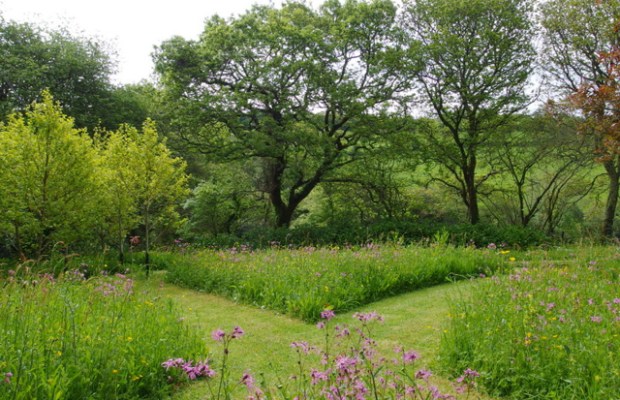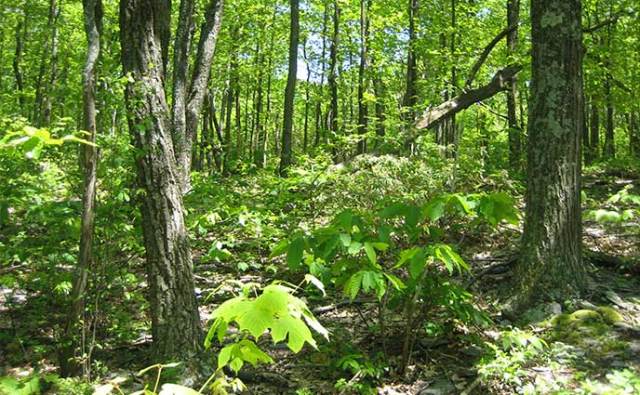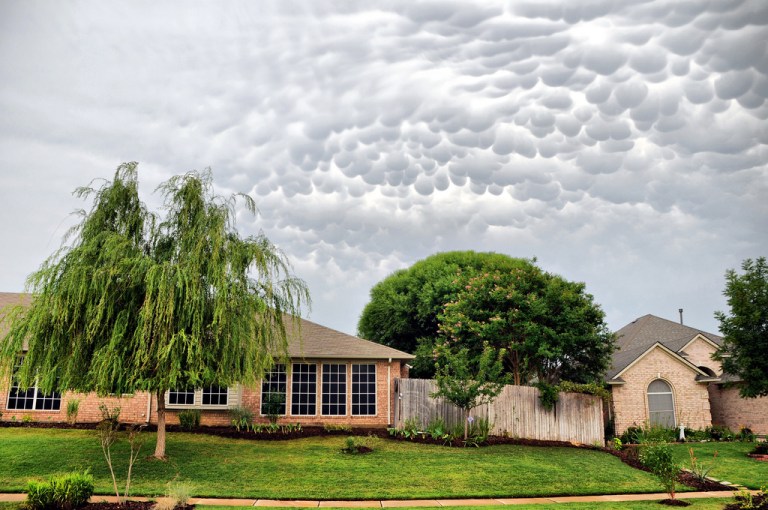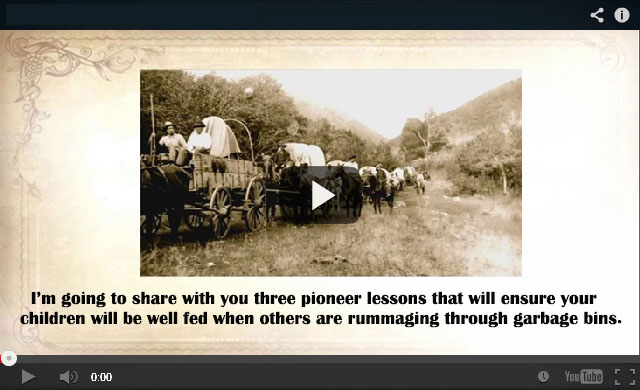The Pro’s & Con’s of Perennials
One of the benefits of going with perennials is that they’re largely a one-time investment. Some may only last a handful of years or a decade, but most will give us 20-50 years or whole lifetimes of production once they get started.
The flip side of that is that most perennials require at least a year or two to establish, many 4-10 years, and fruit/nut perennials could need 10-20 years before they start producing a reasonable yield. A lot of the fruiting perennials are one-offs per year, as well. There are some with longer harvest seasons, but it’s not like an annual garden where in some cases we have the potential to plant four different things in a space per year. Tree and shrub fruit isn’t usually like lettuces or spinach that we can repeatedly harvest from the same plant.
 On the other hand, once they’re established, most perennials don’t really need us a whole lot, unlike annuals, and trees need us even less than smaller shrubs and perennial plants. Perennials can be highly multi-function, with additional roles such as nitrogen fixation that can improve soils around them.Soil stabilizing roots, pollinator habitat and food sources, livestock fodder or forage in the form of green limbs and leaves or tree hay, and medicinal value. Some can be coppiced or selectively pruned to provide us with kindling, rocket stove fuel and mulching chips.
On the other hand, once they’re established, most perennials don’t really need us a whole lot, unlike annuals, and trees need us even less than smaller shrubs and perennial plants. Perennials can be highly multi-function, with additional roles such as nitrogen fixation that can improve soils around them.Soil stabilizing roots, pollinator habitat and food sources, livestock fodder or forage in the form of green limbs and leaves or tree hay, and medicinal value. Some can be coppiced or selectively pruned to provide us with kindling, rocket stove fuel and mulching chips.
Here I’ll stay away from trees like apples and plums that are so commonly grafted and are super susceptible to diseases and pests. They tend to need us, and they tend to be pretty recognizable. Instead, we’ll look at some other options. Most of the ones I’ll recommend are largely free of pests.
I’ll come back to the ones that can be a little less obvious as food production in another article as well. Right now, here’s a look at my top five perennials preppers should consider, selected as such due to their climate versatility, ornamental aspects, health, versatility for all stages of preparedness, and highly multi-functional landscape and production roles: pea shrub, oak, willow, wild plums, and crabapples.
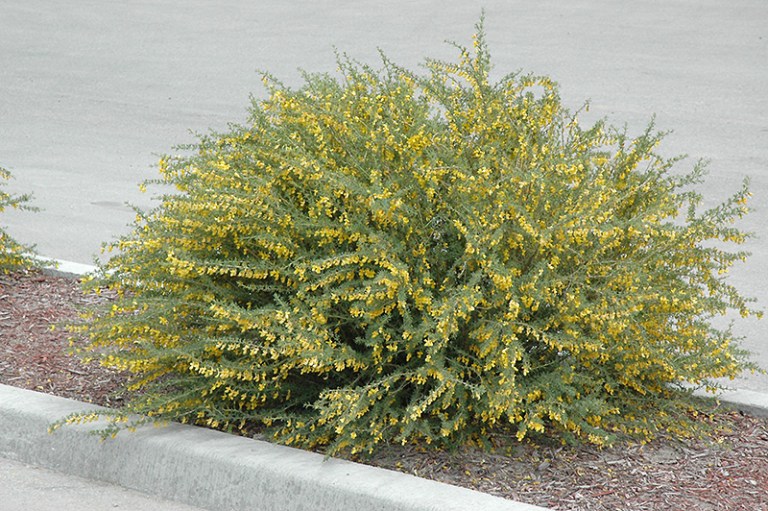
Pygmy peashrub can easily fit into even small urban and suburban gardens and homes.
Pea Shrub
Pea shrub is one of the more controversial plants that we increasingly see due to permaculture’s spreading interests.
Many types of livestock can consume the leaves and pods of pea shrub, providing a fodder or forage plant that can sometimes be lacking in the cooler climates. It’s also a habitat builder for small game and small birds, and beneficial predatory insects. Because it can survive in some pretty gnarly climates and ugly soils (thin, compacted, stripped out) it’s an excellent nurse crop or soil retention and rebuilding crop for mismanaged lands, drylands, and cool or cold climates. As a nitrogen fixer, it’s ideal for production alongside trees and larger shrubs with high needs, especially those that can use the N boost later in the growing season (it takes part of the season for the legumes to start producing excess nitrogen, even the perennials).
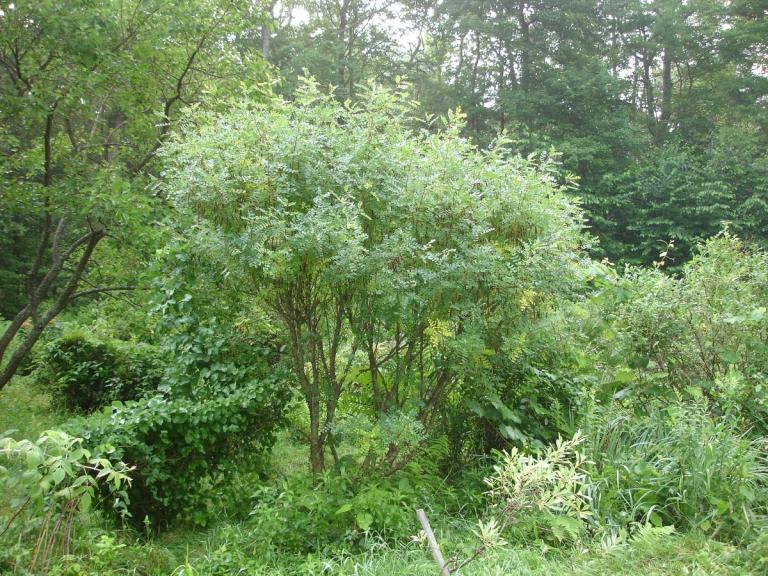
Peashrub offers great variety in use, tolerant of manicuring to a shaped hedge or blending into a freeform native patch – both hiding food or resource production in plain sight.
It’s happier in part shade than in full sun, which makes it an excellent addition for base shrubs against a northern or eastern wall and alongside established trees.
It’s one of the few where instead of a cold-hardy ceiling, we’re bounded instead by heat. Siberian pea shrub can handle zones up to 8 if there’s water, but many varieties will only go up to 6 or 7.
Warmer areas (7-8, sometimes 6 by variety) will find less flowering with some varieties, which means fewer of the pods we can consume and feed livestock green, the tender green seeds, and the dry peas. Shaded areas can help combat this. Even at its warmer limits, it produces foliage well, with that foliage an excellent addition to our tree hays as well as nutrient-rich mulch that we can use to overwinter strawberries or cover our garden beds.
Oaks
Oaks produce acorns, although there’s more to that story than some might think. Acorns come in a number of sizes and shell thicknesses, which increases and decreases their ease for human consumption or the livestock and wildlife that can make use of them. Oaks also tend to produce in cycles, although the cycles can vary widely, from those that grow and mature the nuts in a single year, to those that might take 2-3 years to drop harvests. Some have the same boom-bust cycles found in other nut and fruit trees.
There’s an oak that can be found for every zone, 3-9 at least, with most zones having multiple species native or compatible. Oaks also cover a wide, wide range of soils and precipitation. This site http://www.wildlifegroup.com/shop-for-hardwoods/ is a sale site, but I keep it handy as a reference for oak types, from their size to their zones, soil and climate needs, to production cycles.
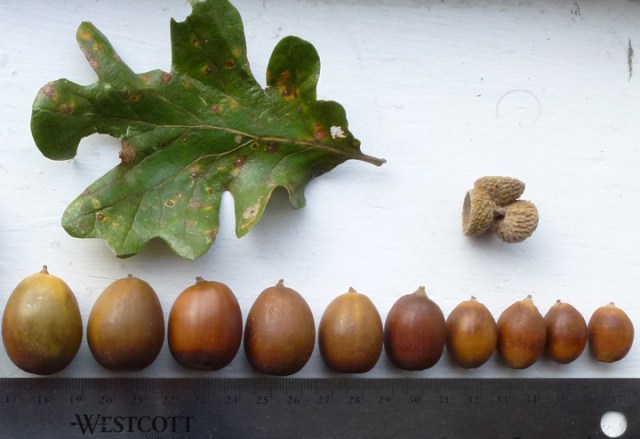
Oaks come in a huge variety, from leaf shape to acorn size and shape, to the climates and conditions they’ll thrive in and their cycles of production.
Oaks can create some challenges due to the jugalone they produce and the high-tannin highly acidic leaves they drop, as well as the dense shade they produce, but there are plenty of native fruits and nuts in oak forests, and even some domestic crops and ornamental edibles that can share space with them, from blueberries to paw-paw. We can also mow the leaf drop annually to mulch over annual gardens and berries that like acidity, or create leaf mold.
A number of yarrows, reed grasses, lilacs, wild-type buckwheats (Californian, coastal, Suzi’s red), woodland and mock strawberry, lavender, lupines, Californian coffeberry/buckthorn, verbena, sages, sorrel, bunching fescue-type grasses, and others can grow in close association with oaks. They allow us to create a naturalized setting or a very ornamental one, with food production for humans as well as medicinal and herbal plants, and pollinator and nurse plants all in the same area. With tailoring, they can create managed free-range grazing for birds raising their own nests, goats, and other species; small game or game bird habitat for increased hunting in cities, suburbs or rurals; and harvested-fodder from grains to soft legumes to fruits and foliage for livestock.
Willow
From the ability to make small-batch or large-plot propagation-rooting and garden-transplant boosting “tea” to the ones that can help with pain management, willow is a pretty well-known function, resource, and survival tree.
We can use its leaves as medicinal feed for most livestock, or regularly supplement with it for goats and rabbits, even chickens, and turn it into tree hay. Wands can be woven for window covers and floor mats, baskets and chair seats, and used as natural ties in some forms of construction, from plant trellises and cages to fish traps and boxes. Its rapid growth enables us to turn it into living fences and hedges with relative speed and ease. We can even use some species to help us “mop up” seasonally or annually boggy areas to allow other plants a better shot at growing.
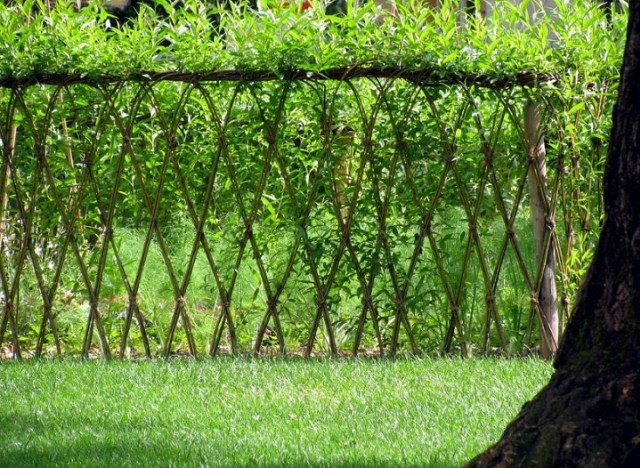
Willow is adaptable to trimming and pruning to hedges, domes, arches, living fences, and small shrubs, increasing its versatility in small lots as well as large homesteads.
Overhanging ponds, creeks and rivers, willow creates excellent habitat for game birds as well as fish, and it can help stabilize banks. As with use in open yards, it can help create a flood and high-rain buffer, soaking up incredible amounts of moisture, especially as a coppiced hedgerow backed by larger trees. Willow’s absorption powers can also help create a buffer between waste-generating systems like livestock manure, outdoor kennels and pet wastes, overflowing septic systems, and runoff from composting toilets or outhouses, and nearby veggie patches or waterways (look up algal blooms for the impact on fishing and waterways).
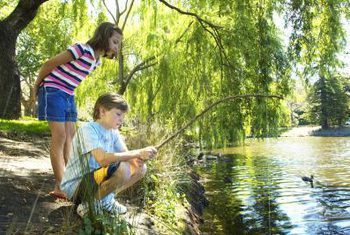
Willow makes an excellent resource and function tree, creating shade and habitat, fodder, and wands for various uses.
Bees and other pollinator and predatory insect species use its pollen extensively. The catkins (flowers) provide a very early season nectar flower for pollinators when not much else has started blooming.
As with oaks, there’s a willow for nearly every climate. Some willows excel in a few key functions far more than others, so some research into variety can help us.
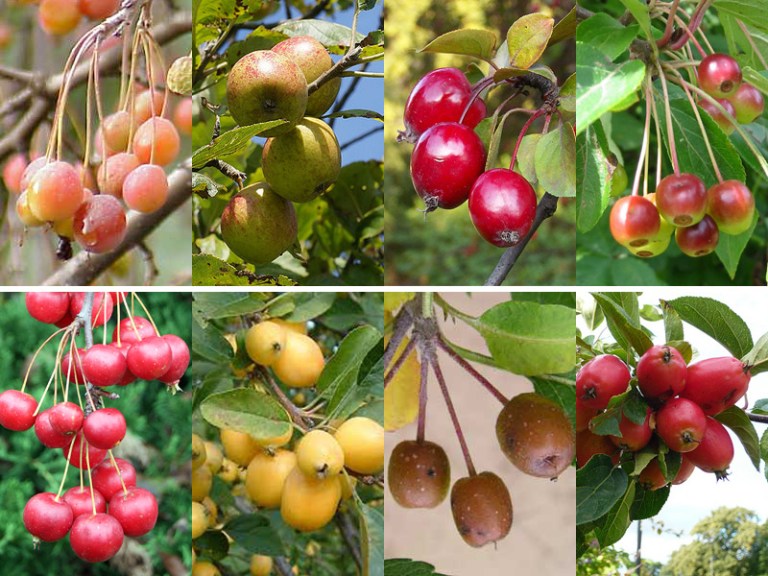
Crabapples come in a variety of sizes, flavors and textures, with varying degrees of palatability.
Wild Plum & Crabapples
Chickasaw is by far my favorite wild plum, but it’s somewhat limited as to region. Like oaks and willows, in most of the U.S. and Canada – as well as Europe – there is a wild plum that is native to our area, or from a region that very closely mimics our conditions. Those will almost always be more successful than something we’re trying to force into our conditions.
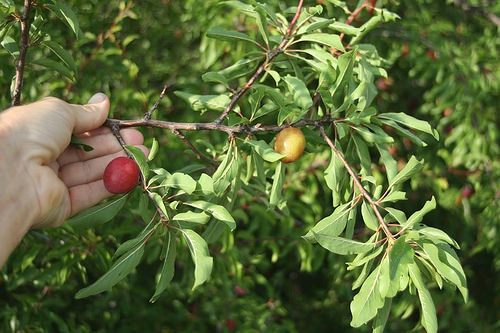
Chickasaw plum
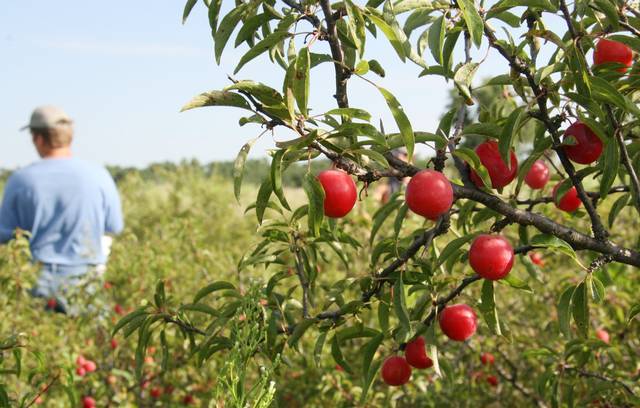
Wild sandhill plum
Wild plums are highly, highly variable. Not only do varieties change hugely in fruit size, texture, and flavor, those fruits can regularly change tree-to-tree, climate-to-climate, season-to-season –even within a small yard’s space, due to microclimate. Some make larger fruits that, while pretty tart, are readily consumed raw and have enough fruit around the pit to be worth it and other produce tiny fruits. Some really have to be juiced and turned into jelly with lots of sweetness added.
Crabapples tend even further toward the “needs processing” side of the line, but sometimes a hybrid or cultivar can be found that isn’t too bad fresh or only baked, or can be aged in cool storage like a Braeburn apple or mayhop to totally sweeten the flavor and soften the texture.
Wild plums and crabapples have a number of uses even with the drawbacks.
They tend to be hardier and a little more resistant to the diseases our domestic rubus fruits face. In some cases they might act as a carrier for pest and disease, but in many cases, the wild cousins can actually help us by forming a “windbreak” of sorts, except for pests. Pests and disease carriers hit them, and the wild fruits keep the disease or insect from jumping from apple to peach to plum to roses to berry brambles.

Wild plums and crabapples tolerate heavy pruning and pleaching, providing the potential of food, fodder, and cross-pollination for domestics in any environment.
They can also regularly serve as cross-pollinating partners for domestics. Wild cousins tend to also be broken into early, mid and late seasons, but they regularly have much longer flowering seasons. As a result, if we lose an ideal partner, our wild cousins may be close enough to fill that role not just for one cultivar, but for several.
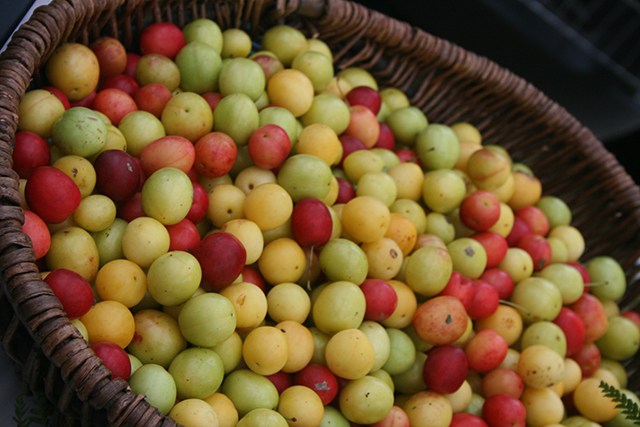
Wild plums are highly variable in fruit size and flavor, with a long flowering period that results in longer harvest periods.
The extended flowering translates into extended fruiting as well, whereas domestics tend to have a 2-4 week window for harvest, by variety. Wild plums and crabapples can be ripening for as much as a 2-3 month period. That can let us spread out the workload, help cover gaps if we missed the harvest season due to injury or a travel, and it can allow us to harvest some of the later fruits or earlier fruits, and run livestock under them for the rest.
Just like domestic apple and plum limbs can be fed in small amounts green or larger amounts when cut and dried for hay, so can wild cousins. The cousins tend to be lower, bushier and even faster-growing, which can increase the ease and amount of fodder harvests.
Some wild plums are thorny, like pea shrub can be, and the woody trunks and branches have the ability to form living fences with the bonus of harvests.
Crabapples share the hedge-tolerant and woody growth advantages. Both also create habitat for edge-dwelling wildlife like quail and rabbits, increasing hunting capabilities whether we’re using a pellet gun in the ‘burbs or a low-load saboted .30-06 on a large spread.
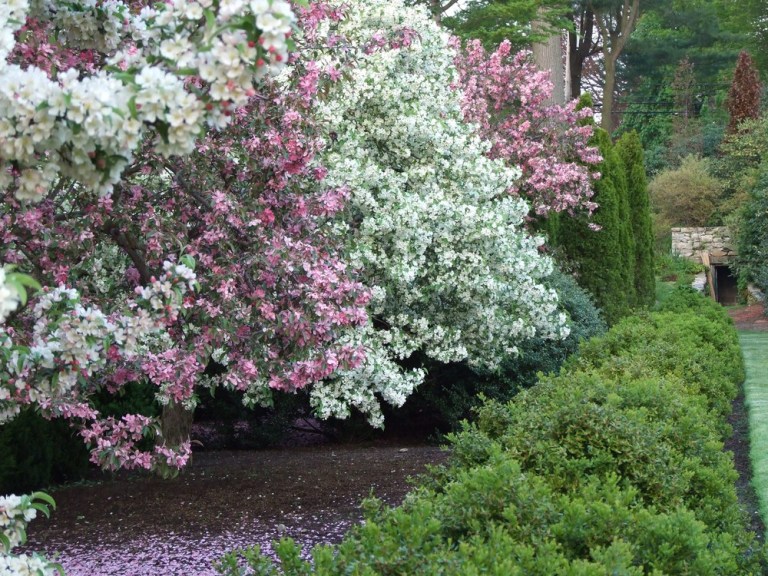
Mixed crabapple hedge
Perennial Foods
There can be some huge benefits to creating a food forest and forage meadow around our homes. Even if we don’t own homes or don’t own much land, we might consider picking up a hardhat and road guard vest, and putting in some perennial shrubs and trees near us, or indulging in some seed bombs (do NOT throw invasives like bishop’s weed or kudzu anywhere; in fact, stick to wild edibles that are native to your area or the habitat-building natives that increase edible wildlife).
In many cases, the plants we choose can be beautiful and provide other services like shade and pest insect reductions, while giving us a resilient, permanent backup food source should we need it. They can provide feed for livestock, or they can create habitat and food sources to increase our game populations. Whether we’re rural or renting, increasing game means increasing food sources.
Planting natives is becoming ever more popular, so they’re increasing in availability. To fill in the areas around these perennials – and any others – look to not only the native species around you, but also to some of the nostalgia fruits like gooseberry, chokecherry and garden huckleberry that fewer folks recognize these days, and natives from similar areas or foods from Africa, Asia and South America that put up with inclement climates and are equally less known such as teff, amaranth, Asian yams, and quinoa. They tend to have fewer U.S. and Canadian pests, and can help make sure we’re the ones harvesting, not passersby.
by R.Ann Parris

